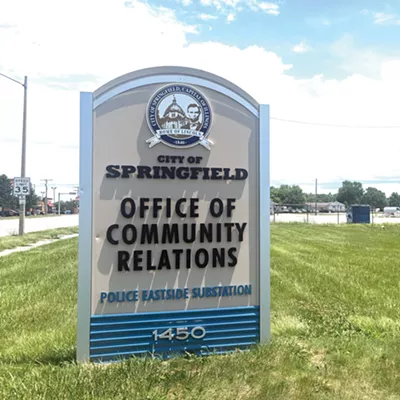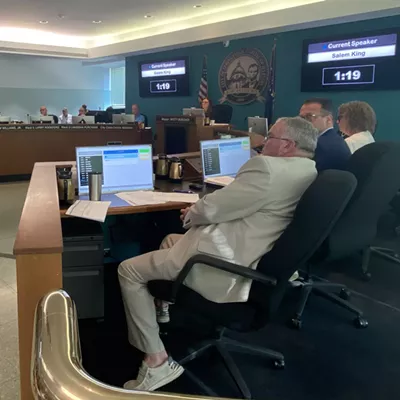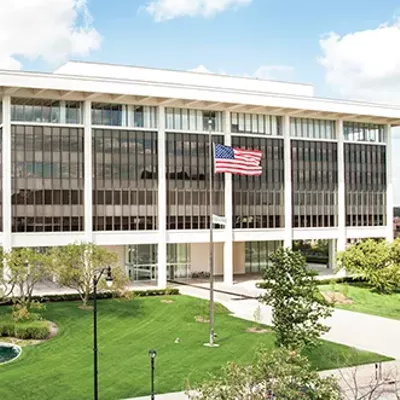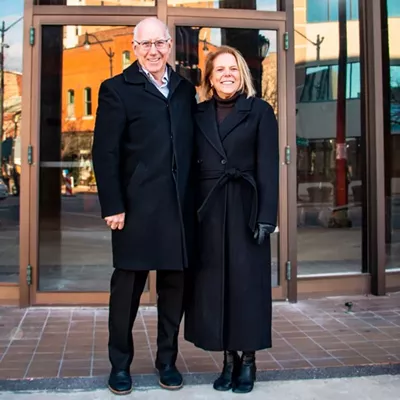The former SSCRPC executive director reflects on a career in public administration
BY SCOTT FAINGOLD
When Norm Sims retired as executive director of Springfield-Sangamon County Regional Planning Commission on Dec. 29, it capped off a public administration career that began in 1974 in the research program at the Kentucky Department of Education, “transferring the fruits of research,” as he described it. “We tried to get teachers and principals to actually use some of the things that were being found.”
Sims remained there until 1980, when he began a stint with the Council of State Governments, which at the time had its national headquarters in Lexington, Kentucky. “You’ve probably never heard of them but they’re an interesting group,” he said. “They do research in policy work for all states, all three branches of government, which was exciting.” While working there, Sims made the acquaintance of the future Illinois governor, Jim Edgar, setting the trajectory for the remainder of his career. “Jim asked me if he were to get elected would I be interested to come to Illinois,” Sims said. “Well, he did get elected and I came here in the summer of ’91.”
He accepted a job as part of the Edgar administration in the Department of Commerce and Community Affairs, first running the policy planning and research program and later as deputy director for community development, eventually becoming director of that program, near the end of Edgar’s second term. Around that time, Sims was approached by Springfield mayor Karen Hasara who offered him a job as city planner. “I worked there through all of Karen’s term and a couple of years of Davlin’s,” he said. Next, he spent some time working for the Illinois Tax Increment Association (“They deal with some TIF stuff but it’s largely economic development.”) before being hired as executive director for SCRPC in August 2007.
Looking back on over 10 years as staff for the commission, Sims finds a lot to be proud of. “There were several exciting things we worked on – some may be more mundane than others,” he said. “We did a lot of work on high-speed rail, particularly the movement of the trains, getting them consolidated on the 10th Street line. That was an interesting time and we did a great amount of work on that.”
Other achievements that stick out for Sims include work done on wind farms, as well as the commission’s success in getting several communities in Sangamon County to adopt updated comprehensive plans. “Most of them didn’t. So I think we’ve done seven, and that does include the city of Springfield’s plan,” he said. “That was a major effort. We’re pretty proud of that work.”
Some of the biggest changes Sims has seen over the past decade have been in terms of perceptions and culture surrounding the SSCRPC. “I kept being told when I came on with the planning commission that it was considered ‘the communists on the second floor of the county building’ and I think we’ve changed that orientation,” he said with pride. “Elected officials and others now seek out our opinions. I tried to move the commission to a place where we are seen as doing work as good as big, expensive consulting firms out of Chicago. But we’ll do it cheaper while knowing what the individual needs of the communities and the county here are.”
Sims is also proud of having put together a regional strategic plan for Sangamon County and all of its communities in 2015. “We just finished some work the other day that’s an outgrowth of that,” he said. “We have all these small, rural communities that don’t think of themselves as part of a region and so we wanted to work with them to actually develop things that could help them be identified that way.” In 2016, the planning commission received a grant from IDOT which allowed them to hire Springfield landscape architects Massie Massie and Associates as consultants to draw up designs for four small, rural communities. The architects suggested that as most of these communities have grain silos, art could be painted directly on the silos to create a rural tourist attraction. “That brings people to these communities and they can look at it and see, well, I might want to live here, I might want to do business here,” said Sims.
Sims fears Springfield may be suffering from an Abraham Lincoln overdose, as there are other things for which the town should be proud. “I was working on a thing today called ‘hometown heroes.’ There are a lot of people here of all races and all sexes and everything else that have been pretty successful. Maybe we ought to start recognizing that and start putting some pictures up on buildings around town to show that.”
Another long-term plan for the city that Sims has suggested relates to the Third Street rail corridor. “I don’t know if you’re familiar with San Antonio’s River Walk,” he said. “Well, we don’t have a river running through Springfield but when that railroad track is gone and becomes a linear park we are going to have a Third Street rail corridor. Let’s make that our River Walk and expand from that.”
On a sobering note, Sims said the number one challenge facing Sangamon County over the course of time will be population growth. “All of the central Illinois counties are losing population, the state is losing population and part of that is we’re losing our young people,” he said. “The question becomes, how do you make a Springfield or a Sherman or a Virden or an Illiopolis more attractive for young people to live and work? If trends continue, we don’t have enough young people coming into the labor pool to fill the jobs we have now. I think there’s a lot that this whole county and region has to offer.”
Sims seemed only to be partially joking when he pointed out that planners do not have a patron saint. “I’ve sent letters to the Pope suggesting that they have one. One that I suggested was St. Jude, who is the patron saint of lost causes. But I’ve had no success in getting the Pope to give us one. If we were Greek, it’d probably be Cassandra, who could tell the future but she was condemned and nobody would ever believe her. We try to give everybody fair warning – then at least we can say, ‘We told ya it’s happening. Get ready for it!’”
Scott Faingold can be reached at sfaingold@illinoistimes.com









